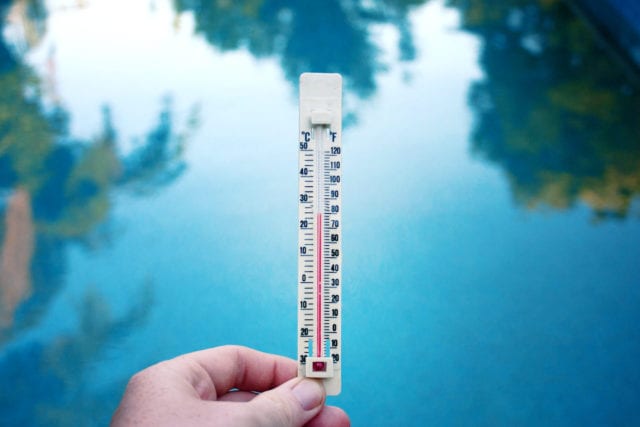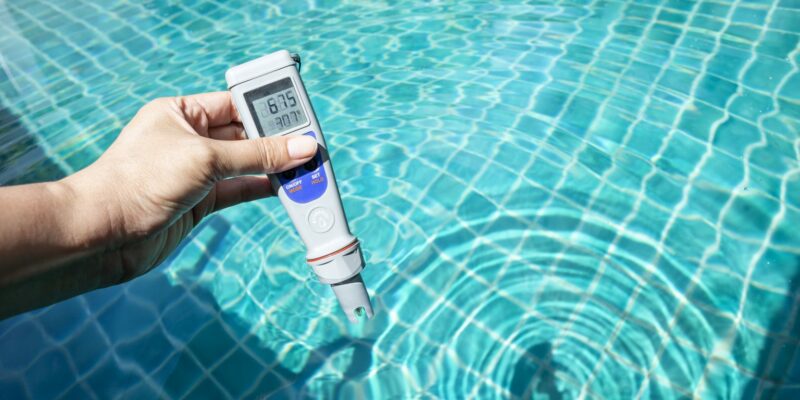Owning a swimming pool is a luxury that brings both joy and relaxation. However, achieving the perfect pool experience hinges significantly on maintaining an ideal water temperature. This guide will explore how to find and sustain the optimal swimming pool temperature, balancing comfort and cost-effectiveness to enhance your swimming pleasure.
The Importance of Pool Temperature
The temperature of your pool water directly affects the enjoyment and usability of your pool. Too cold, and it becomes uncomfortable; too warm, and it can become a breeding ground for bacteria and algae, not to mention the skyrocketing energy costs. Striking the right balance ensures maximum comfort, safety, and efficiency. The ideal pool temperature enhances swimmer satisfaction, prolongs swim sessions, and ensures a welcoming environment for all pool users.

Determining the Ideal Temperature
Personal Preference
– Swimmer Comfort: Most swimmers find a temperature range between 78°F and 82°F (25.5°C – 27.8°C) to be the most comfortable. This range provides a pleasant experience without feeling too chilly or overly warm. Each individual has their own comfort zone, and adjusting the temperature to suit the majority of swimmers can enhance overall satisfaction.
– Health Considerations: For therapeutic and health purposes, such as physical therapy or for elderly swimmers, a slightly warmer temperature between 84°F and 88°F (28.9°C – 31.1°C) may be preferable. Warmer water helps soothe muscles and joints, making it ideal for hydrotherapy and for individuals with arthritis or other musculoskeletal conditions.
Usage Purpose
– Recreational Swimming: For casual swimming and family fun, a temperature between 78°F and 80°F (25.5°C – 26.7°C) is usually ideal, providing a refreshing experience without being too cold. Recreational swimming focuses on comfort and enjoyment, making these temperatures perfect for long, relaxing swim sessions.
– Competitive Swimming: Professional swimmers often prefer cooler temperatures around 77°F to 79°F (25°C – 26.1°C) to prevent overheating during intense physical activity. Cooler water helps maintain optimal body temperature, reducing fatigue and enhancing performance during vigorous training and competitions.
– Exercise and Aquatic Fitness: For activities like water aerobics or lap swimming, maintaining a temperature between 80°F and 83°F (26.7°C – 28.3°C) helps keep muscles warm and flexible. This temperature range is conducive to exercise, allowing for prolonged physical activity without discomfort.
Seasonal Adjustments
– Summer: During hot summer months, keeping the pool temperature between 78°F and 80°F (25.5°C – 26.7°C) offers a refreshing respite from the heat. These temperatures provide a cool and inviting environment, encouraging frequent use and enjoyment of the pool during the hottest months.
– Winter: In cooler seasons or for heated indoor pools, maintaining a warmer temperature between 82°F and 84°F (27.8°C – 28.9°C) ensures the pool remains inviting despite the external chill. Warmer water in winter extends the swimming season, allowing year-round use and comfort.

Cost Considerations
Heating Systems
– Gas Heaters: These provide quick heating but can be costly to operate over time. They are best for pools that are used sporadically. Gas heaters are effective for raising the water temperature rapidly, making them suitable for last-minute pool heating needs, but their operational costs can add up quickly.
– Electric Heat Pumps: These are more energy-efficient and cost-effective in the long run, although they have a higher upfront cost. Heat pumps draw heat from the surrounding air, making them environmentally friendly and suitable for consistent pool heating throughout the swimming season.
– Solar Heating: Utilizing solar panels to heat your pool is the most eco-friendly and cost-efficient option over time, though it requires significant initial investment and adequate sunlight. Solar heating harnesses renewable energy, significantly reducing operational costs and environmental impact.
Insulation and Covers
– Solar Covers: These covers not only keep debris out but also help retain heat, reducing heating costs by preventing heat loss during cool nights. Solar covers can raise the water temperature by several degrees and reduce evaporation, conserving water and chemicals.
– Liquid Pool Covers: A modern alternative to traditional covers, these create a thin, invisible barrier on the water surface, reducing evaporation and heat loss. Liquid covers are easy to use and can be applied without the hassle of removing and storing a physical cover.
– Windbreaks and Landscaping: Strategically placed plants, fences, or screens can act as windbreaks, reducing heat loss due to wind and lowering heating costs. Windbreaks also enhance the aesthetic appeal of the pool area, creating a more pleasant environment for swimmers.
Energy Management
– Timers and Thermostats: Using programmable timers and thermostats allows you to regulate heating, ensuring the pool is only heated when necessary. Automated systems provide precise control, reducing energy waste and ensuring the pool is always at the desired temperature when needed.
– Off-Peak Heating: Heating your pool during off-peak electricity hours can significantly reduce energy costs, especially with electric heat pumps. Taking advantage of lower electricity rates during non-peak hours helps manage heating expenses more effectively.

Maintaining Optimal Temperature
Regular Monitoring
– Thermometers: Use digital or floating thermometers to regularly check and maintain your pool’s temperature. Consistent monitoring ensures immediate adjustments can be made, preventing temperature fluctuations. Accurate thermometers provide real-time data, helping maintain the desired temperature consistently.
– Smart Pool Systems: Investing in a smart pool system can automate temperature regulation, providing real-time data and remote control options through smartphone apps. Smart systems offer convenience and precision, allowing for effortless temperature management from anywhere.
Routine Maintenance
– Filter Cleaning: Ensure your pool’s filtration system is clean and functioning efficiently. A well-maintained filter helps distribute heated water evenly and maintains overall water quality. Regular filter cleaning prevents clogs and ensures optimal water circulation, enhancing heating efficiency.
– Chemical Balance: Maintaining proper chemical balance prevents issues that can arise from temperature changes, such as algae growth in warmer water or calcium buildup in cooler conditions. Regular testing and adjustment of chemical levels ensure a safe and pleasant swimming environment.
Energy-Efficient Practices
– Nighttime Covering: Always cover your pool at night to retain heat and reduce evaporation. This practice alone can significantly lower heating costs. Using covers reduces heat loss, keeping the water warm overnight and reducing the need for additional heating.
– Optimal Pump Operation: Run your pool pump during the warmest part of the day to maximize heat retention from the sun, especially if using solar heating. Efficient pump operation ensures even heat distribution and maximizes the benefits of solar heating systems.
Finding and maintaining the ideal swimming pool temperature is a delicate balance between personal comfort and cost efficiency. By understanding the factors that influence temperature preferences and employing effective heating and maintenance strategies, you can enjoy a perfectly tempered pool year-round. Whether you’re swimming for leisure, fitness, or therapeutic reasons, optimizing your pool temperature enhances the overall experience while keeping operational costs in check. Embrace these practices to ensure your pool remains a luxurious, inviting retreat every day. Consistency in maintenance routines, along with timely intervention at the first signs of temperature imbalance, will help you avoid major issues and enjoy your pool without interruption. Whether you are a new pool owner or a seasoned veteran, staying informed and proactive is the best way to ensure a beautiful, comfortable, and cost-effective swimming experience.

